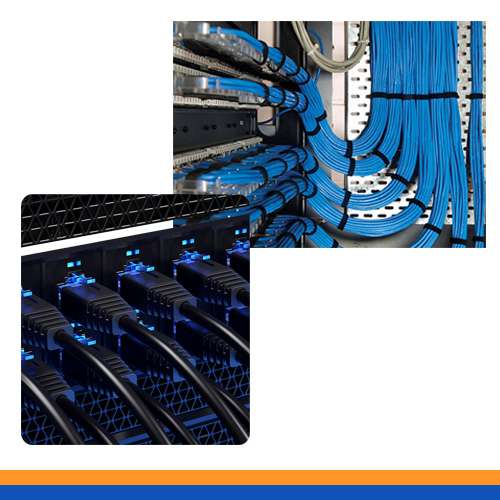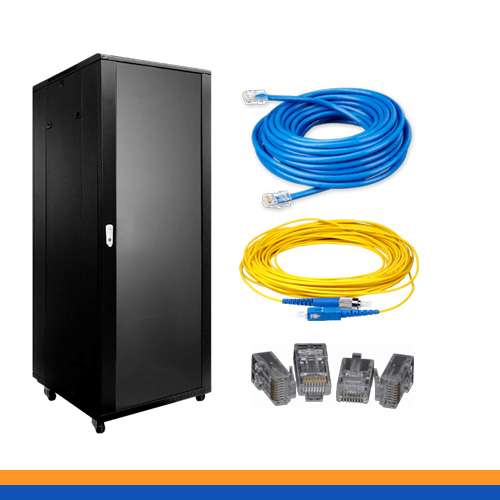Enhancing networks, and empowering businesses.

Structured Cabling
Structured cabling is a networking infrastructure solution that uses standardized cabling systems to handle voice, data, and video transmission. It offers a dependable and expandable framework for network communication in various settings, such as workplaces, data centers, and industrial facilities.
For Businesses of All Sizes
UDC provides total structured cabling solutions. We can create you an infrastructure that adapts to your daily needs and improves your bottom line for growing enterprises as well as large call center environments.
Why Businesses Need Structured Cabling
Imagine your network is having a problem. Your IT crew is neglecting their other responsibilities as they search through miles of wiring to find the culprit of one of your wires that isn’t functioning as it should. What if your cable system was well-organized, labeled, and equipped with distinct access points?
Structured Cabling System

We supply and install structured cabling:
- Structure cabling design & installation
- Fiber optic cabling
- Data network cabling
- Cat 5E, Cat 6, Cat 6A
- Ethernet cabling
Benefits of Structured Cabling
Easy to Manage
Adaptability
Less Downtime
Cost-Effective
Frequently Asked Questions
Data cabling (or network cabling) is designed to transmit data as electronic signals between devices.
- Entrance Facilities
- Equipment Room
- Backbone Cabling
- Telecommunications Room
- Horizontal Cabling
- Work Area
The crucial difference between copper cable and fiber optics is that copper cable transmits signal in the form of electrical pulses while fiber optics possess signal transmission in the form of light pulses.
Category 5/6,/6A cable, single-mode fiber, and multi-mode fiber vary in capabilities and price.
Copper cable comes in many different flavors, but the most common are Cat5E, Cat6, and Cat6A. The speed, frequency, and cost increase with each level. According to TIA recommendations, Cat5E is legacy, Cat6 is the minimum, and Cat6A is recommended.
Although it is possible to install a structured cabling system by yourself, we advise doing so. When planning and constructing a structured cabling system, many elements need to be taken into account, including the cable type, the distance, and the data rate. An expert installer will be able to guarantee that your system is setup appropriately and satisfies your unique needs.
The cost of structured cabling services can vary greatly based on a wide range of factors, such as the size of the building, the number of drop locations required, the type of cables needed, and the location of the business.

